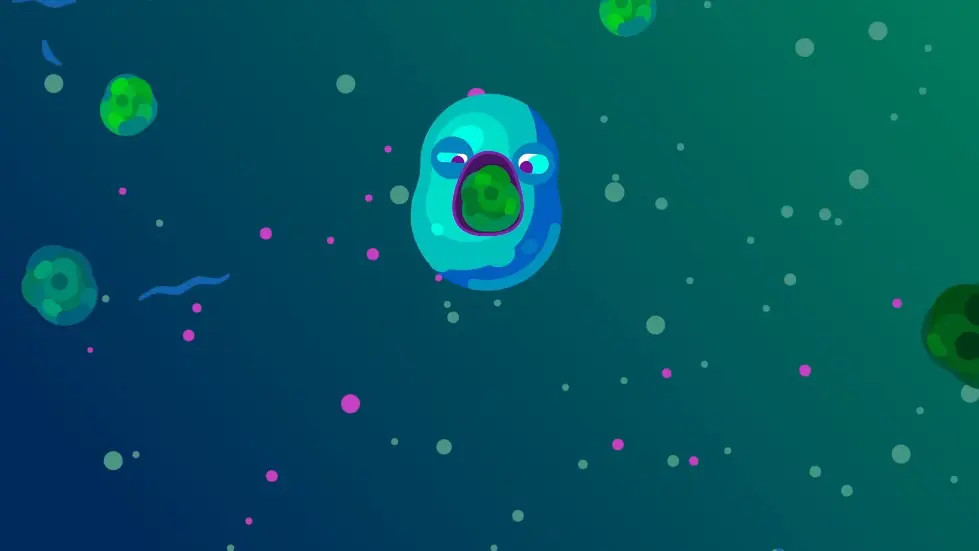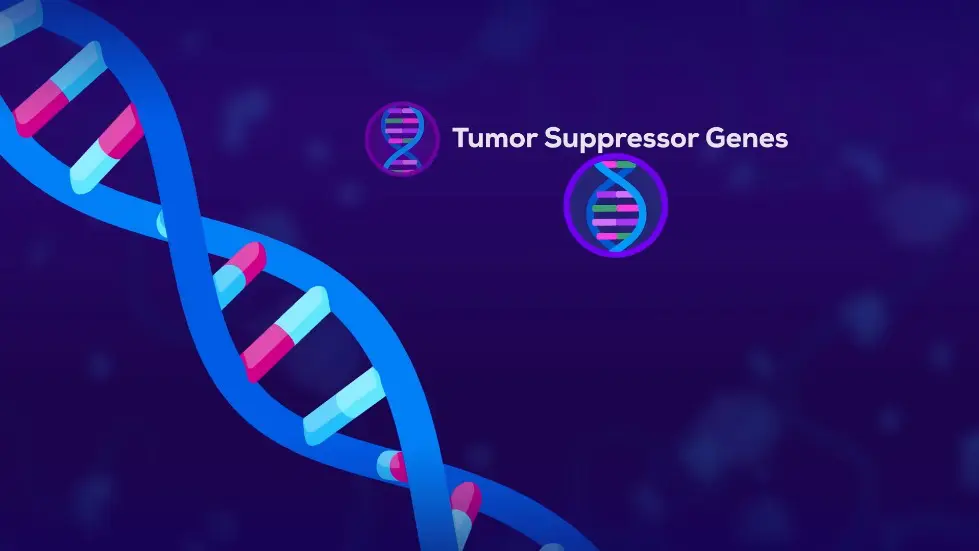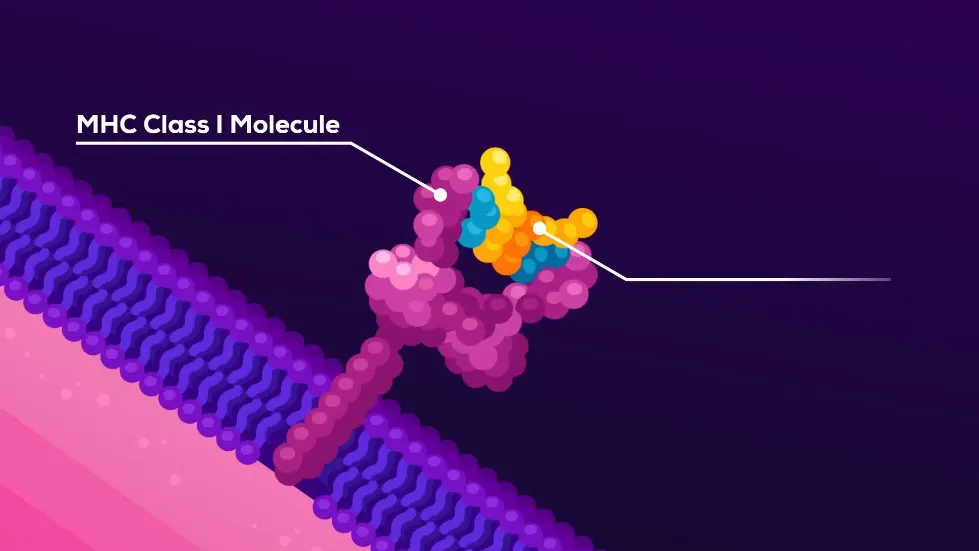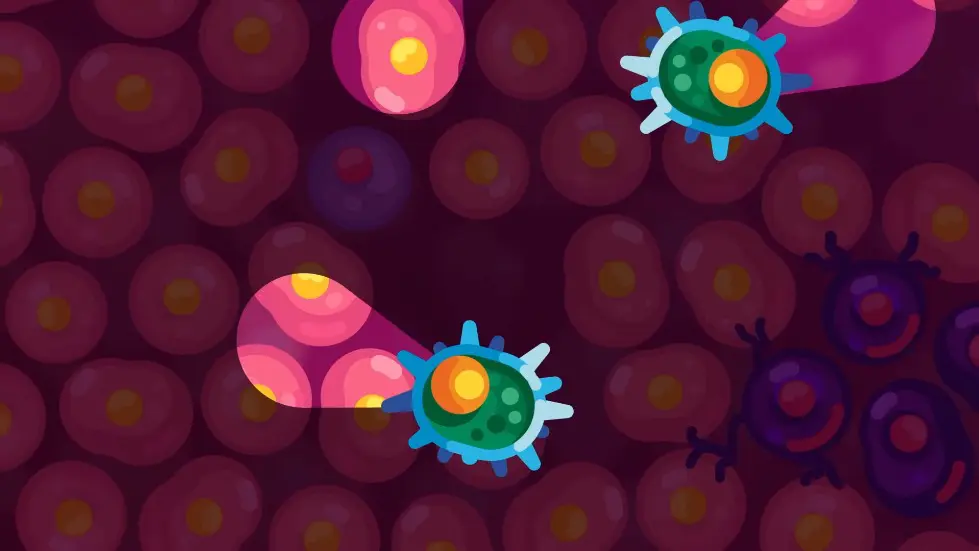Your Body Killed Cancer 5 Minutes Ago
Last updated: May 17, 2023
The video explains how cancer cells develop and how the body's immune system works to kill them, with a focus on the importance of tumor suppressor genes, oncogenes, and the cell's suicide switch.
The video explains how cancer cells develop and how the body's immune system fights against them.
Cancer is when cells in the body become corrupted and multiply uncontrollably, taking resources and space from healthy cells.
The body's immune system has mechanisms to detect and kill these cancer cells, but sometimes they can become too numerous and aggressive.
The development of cancer is caused by mutations in genes that control cell growth and repair, and these mutations can occur naturally over time or be caused by external factors like smoking or exposure to certain viruses.
Despite the harm they cause, cancer cells are not evil and are simply following their corrupted programming.
- The immune system kills cancer cells without us noticing.
- Cancer is when corrupted cells multiply uncontrollably.
- Cells have a nucleus filled with DNA, which consists of genes.
- The first key mutation is in tumor suppressor genes, which keep normal cells from multiplying recklessly.
- Most cancer cases have no cause other than bad luck.
Your Body Killed Cancer 5 Minutes Ago - YouTube

Introduction
- The immune system kills cancer cells without us noticing.
- Cancer cells are parts of ourselves that start to behave as individuals.
- Cancer cells can become a new organism within us.
- Cancer cells are not evil, they just follow their corrupted programming.
- Cells need to cooperate to stay healthy.

What is Cancer?
- Cancer is when corrupted cells multiply uncontrollably.
- Cancer can emerge from any type of cell in the body.
- There are hundreds of types of cancer, some slow-growing and others aggressive.
- Cancer cells stop being part of the collective and become individuals again.
- Cancer cells take resources and compete for space, destroying organs in the process.

The Soul of the Cell
- Cells have a nucleus filled with DNA, which consists of genes.
- Genes are instructions for building proteins.
- A corrupt gene produces a corrupt protein.
- Cells mutate tens of thousands of times each day.
- Damage accumulates over time as cells make copies of themselves.

Your Body Killed Cancer 5 Minutes Ago - YouTube
The Three Crucial Mutations
- The first key mutation is in tumor suppressor genes, which keep normal cells from multiplying recklessly.
- The second crucial mutation can happen in oncogenes, which tell cells to multiply rapidly.
- The third crucial mutation is in the cell's suicide switch, which triggers a controlled suicide called apoptosis.
- If these genes become damaged, cells can reproduce unchecked and live on despite being dangerously corrupted.
- Most cancer cases have no cause other than bad luck.

How the Immune System Kills Cancer Cells
- Cancer cells develop when mutations occur in genes that control cell growth and division.
- Tumor suppressor genes help prevent cancer by repairing damaged DNA or causing cells to die if they cannot be repaired.
- Oncogenes promote cell growth and division, but can cause cancer if they are overactive or mutated.
- The immune system identifies and kills cancer cells by recognizing abnormal proteins produced by oncogenes or other mutated genes.
- MHC class 1 molecules act as display windows that showcase the proteins produced by cells, allowing the immune system to identify and kill cancer cells.
- Natural killer cells patrol the body and kill cells that do not have MHC class 1 molecules, indicating that they are hiding something.

Why Cancer Cells Can Still Survive
- Cancer cells can mutate and become better at avoiding the immune system's defenses.
- Some cancer cells stop producing MHC class 1 molecules, making them invisible to the immune system.
- Natural killer cells can still identify and kill cancer cells that do not have MHC class 1 molecules.
- Cancer is an arms race between cancer cells and the immune system, but new therapies such as cancer-fighting vaccines and engineered T cells are showing promise.
- With continued research and development, cancer may eventually be eliminated.
Watch the video on YouTube:
Your Body Killed Cancer 5 Minutes Ago - YouTube
